
Jasminum sambac, Mogra, Arabian Jasmine Plant in 6 inch Pot
(MRP Inclusive of all taxes)
- Shipping ₹79 for entire order
- Dispatch in 7 days
- Country of origin: India

(MRP Inclusive of all taxes)
 Save 29%
Save 29%
Air Purifier Money Plant with Pot The Air Purifier Money Plant, also known as Pothos or Epipremnum aureum, is a stunning indoor plant that...
View full details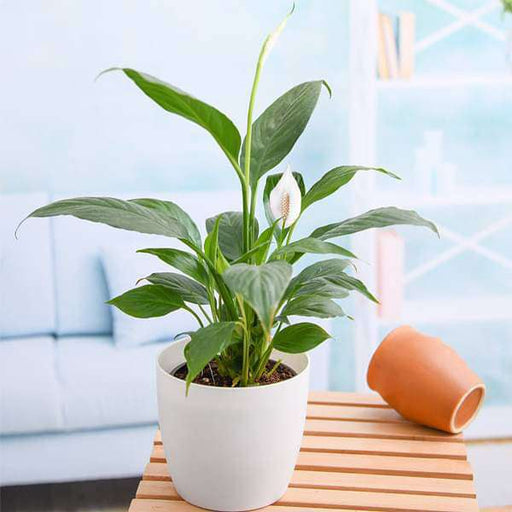
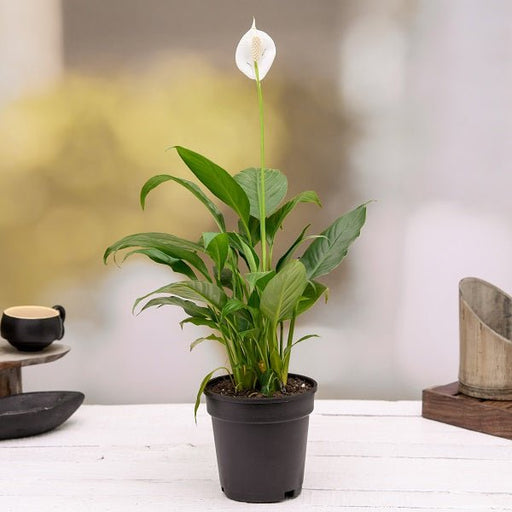 Save up to 15%
Save up to 15%
Peace Lily, Spathiphyllum - Plant The Peace Lily, scientifically known as Spathiphyllum, is a stunning houseplant celebrated for its elegant white...
View full details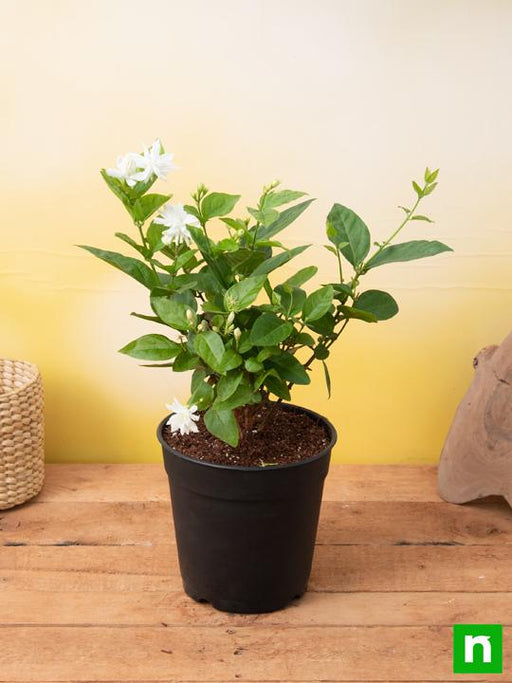
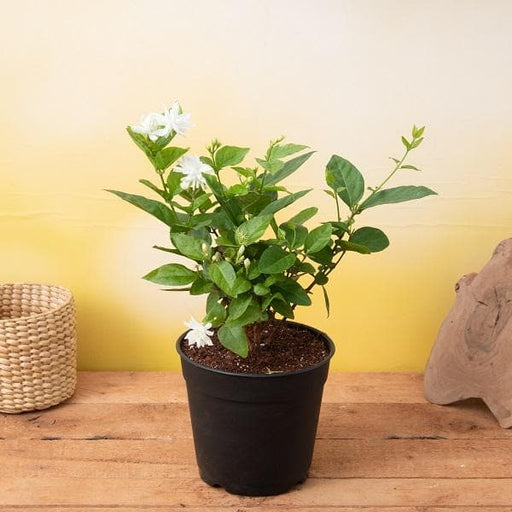 Save 25%
Save 25%
Jasminum sambac, Mogra, Arabian Jasmine - Plant Jasminum sambac, commonly known as Mogra or Arabian Jasmine, is a fragrant flowering plant...
View full details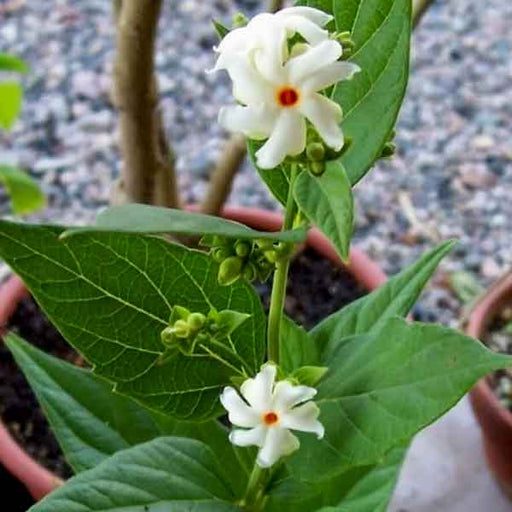
 Save 18%
Save 18%
Combo Constituents Includes the Parijat Tree (Night-Flowering Jasmine), a culturally significant plant with fragrant flowers. Description The Pari...
View full details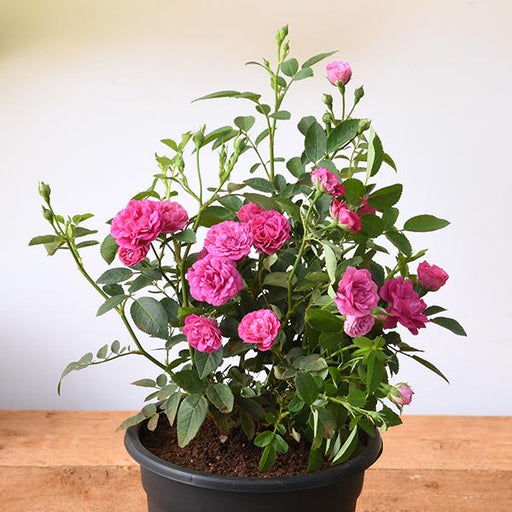
 Save 25%
Save 25%
Miniature Rose, Button Rose (Any Color) - Plant The Miniature Rose, also known as the Button Rose, is a charming and compact flowering plant that ...
View full details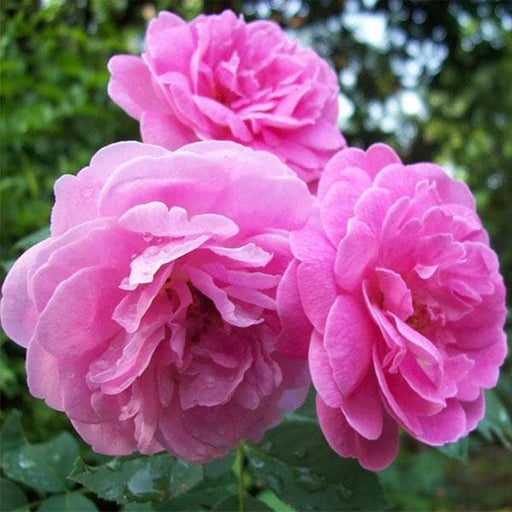 Save 25%
Save 25%
Damascus Rose, Scented Rose (Any Color) - Plant The Damascus Rose, also known as Rosa damascena, is a timeless symbol of beauty and romanc...
View full details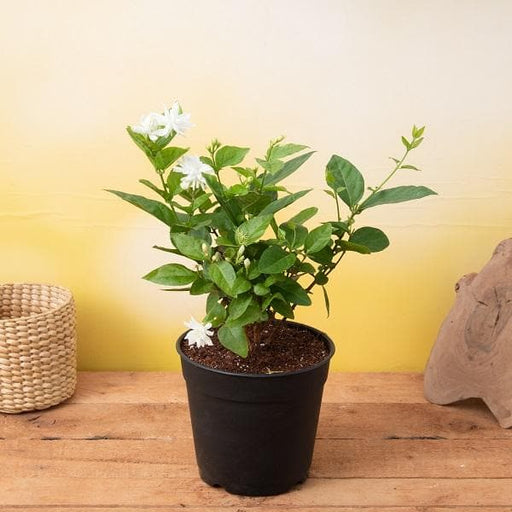
 Save 17%
Save 17%
Beautiful Fragrant Mogra, Arabian Jasmine Plant with Pot The Beautiful Fragrant Mogra, also known as Arabian Jasmine (Jasminum sambac), is...
View full details Save 15%
Save 15%
Pack of Vermicompost and Neem Cake for House Plants Transform your indoor garden with our premium Pack of Vermicompost and Neem Cake, spec...
View full details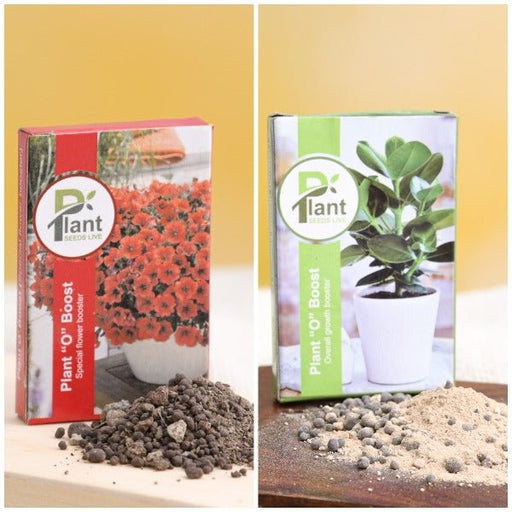
Pack of Plant Growth and Flower Boosters Unlock the full potential of your garden with our Pack of Plant Growth and Flower Boosters! This ...
View full details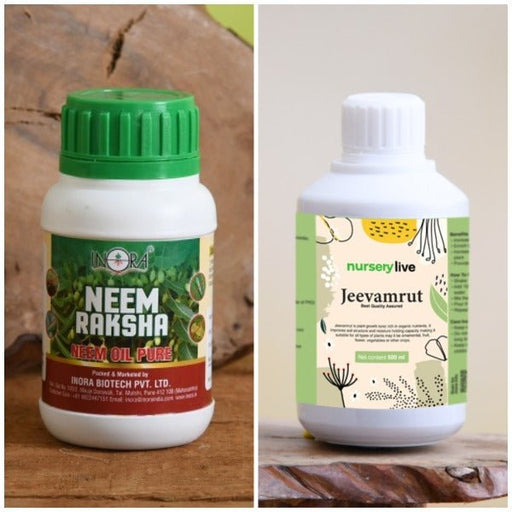 Save 38%
Save 38%
Combo of Jeevamrut and Neem Raksha for Easy Growth and Protection of Houseplants Transform your indoor garden with our exclusive combo of ...
View full details Save 22%
Save 22%
Plant Nutrients Kit (Pack of 16) for a Healthy Garden Transform your garden into a lush paradise with our Plant Nutrients Kit, featuring 1...
View full details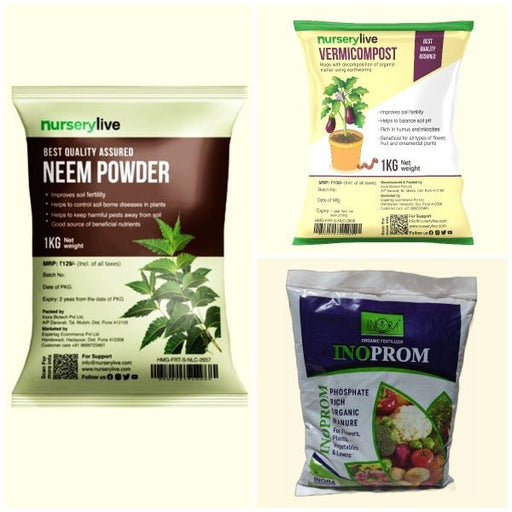 Save 16%
Save 16%
Combo of Top Plant Fertilizers Elevate your gardening game with our exclusive Combo of Top Plant Fertilizers, featuring two bags of premiu...
View full details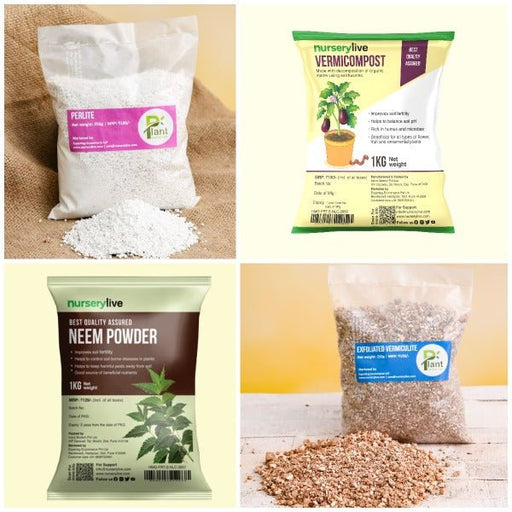 Save 24%
Save 24%
Pack of 4 Additives to Make Soil Healthy and Nutrient Rich Transform your garden into a thriving ecosystem with our Pack of 4 Additives de...
View full details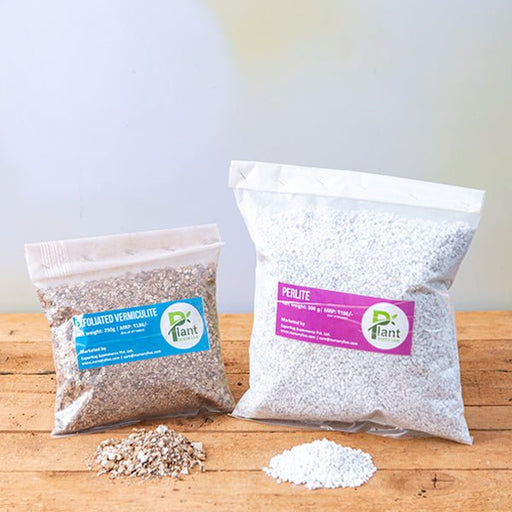 Save 30%
Save 30%
Transform your gardening experience with our premium Combo of Perlite and Vermiculite. This unique blend is designed to enhance soil aeration and ...
View full details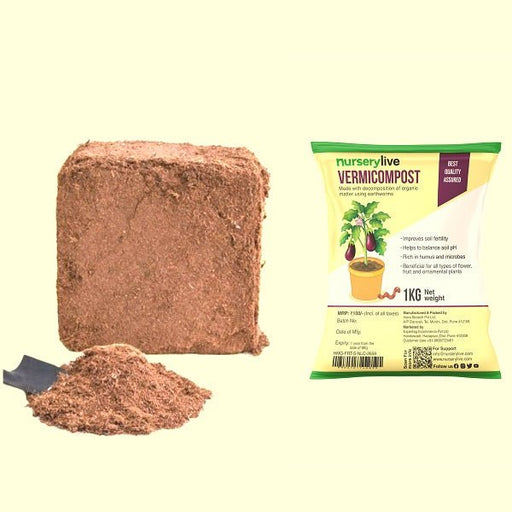 Save 27%
Save 27%
Combo of 2 Vermicompost and Cocopeat - Enrich Your Soil Naturally! Transform your garden into a thriving ecosystem with our Combo of 2 Ver...
View full details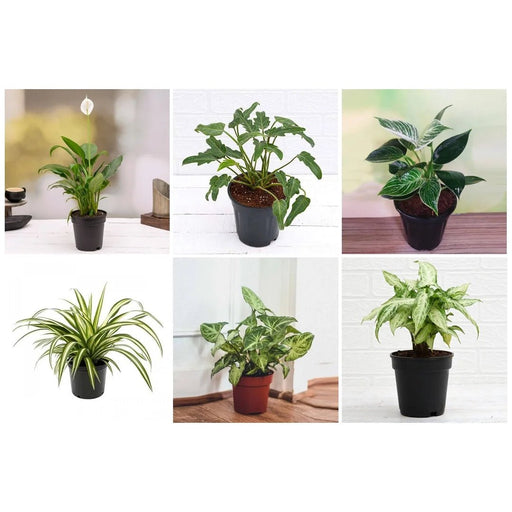
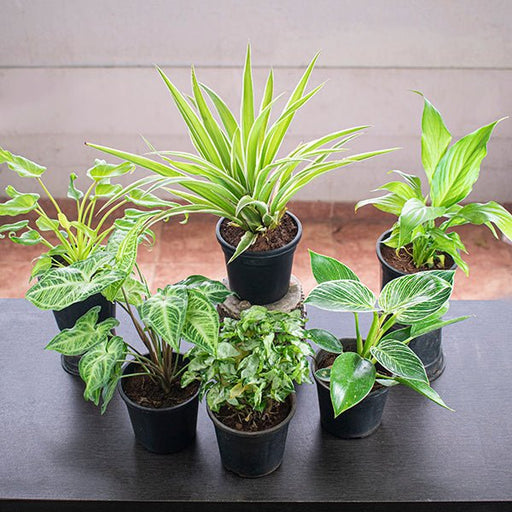 Save 35%
Save 35%
Best 6 Plants for Perfect Indoor Garden Transform your living space into a lush oasis with our curated collection of the Best 6 Plants for a...
View full details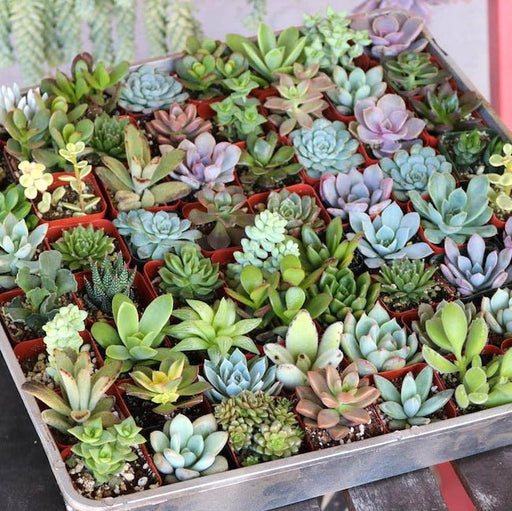
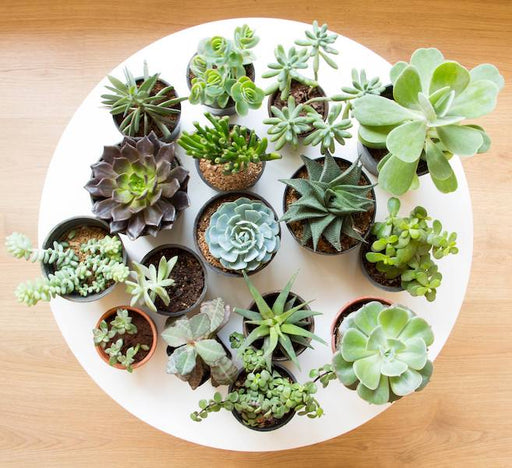 Save up to 50%
Save up to 50%
Mini Succulent Garden Pack Transform your space with our Mini Succulent Garden Pack, featuring a delightful collection of 4 any variety beautiful s...
View full details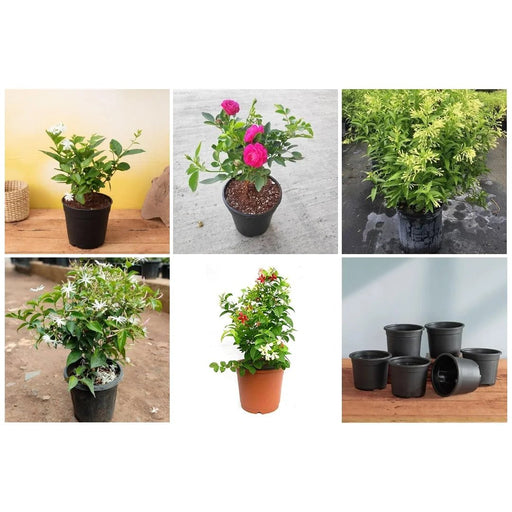
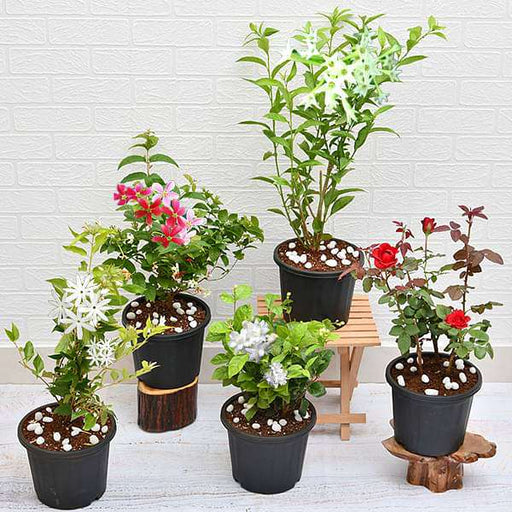 Save 30%
Save 30%
5 Best Fragrant Plants Transform your garden or indoor space into a fragrant paradise with our curated selection of the 5 Best Fragrant Plants. Th...
View full details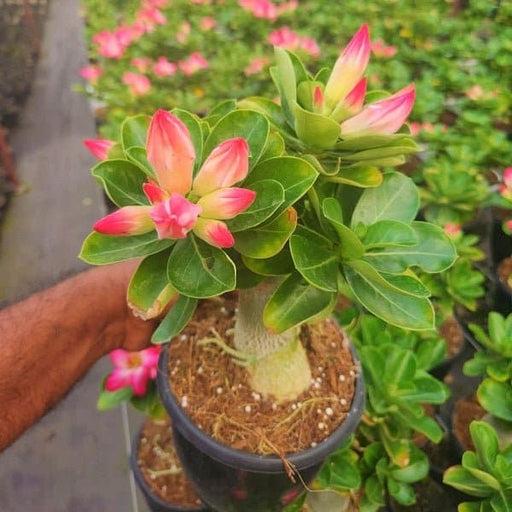
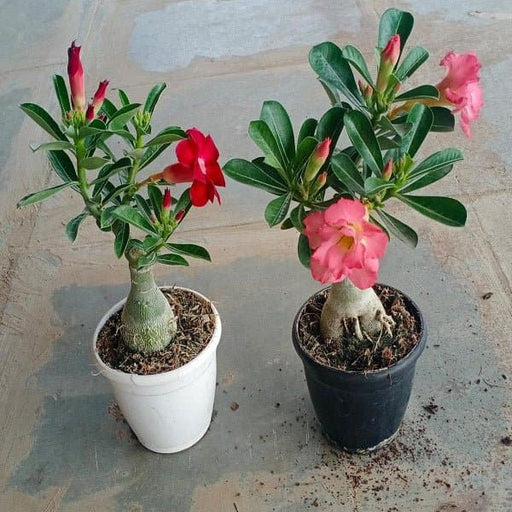 Save 24%
Save 24%
Set of 2 Bonsai Looking Grafted Adeniums Transform your indoor or outdoor space with our exquisite Set of 2 Bonsai Looking Grafted Adenium...
View full details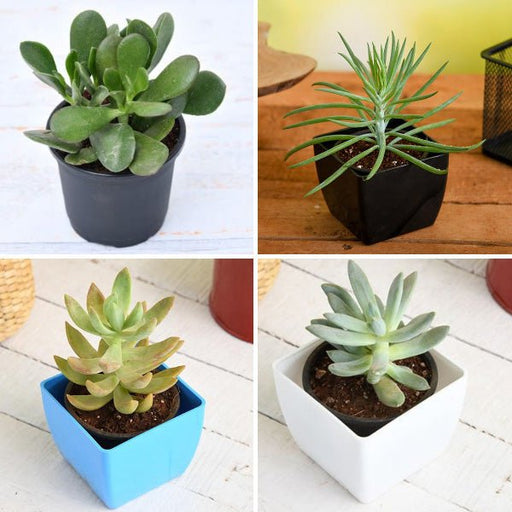 Save 45%
Save 45%
Top 4 Die Hard Succulents Pack Transform your indoor or outdoor space with our Top 4 Die Hard Succulents Pack, featuring a curated selecti...
View full details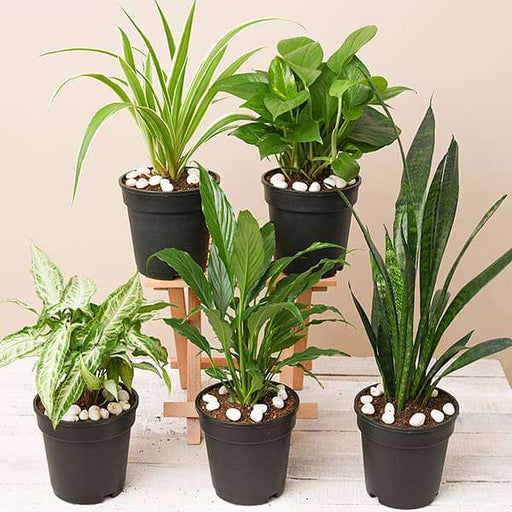
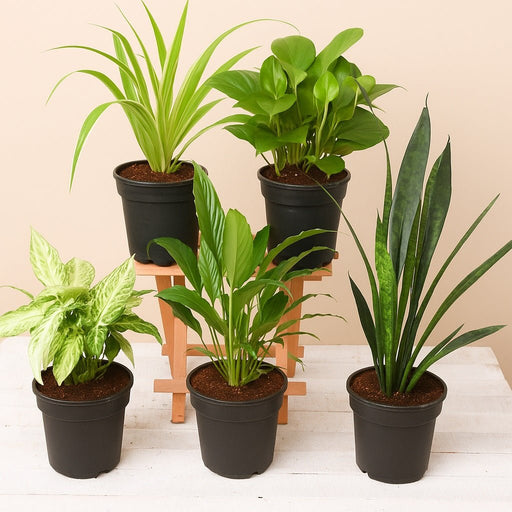 Save 30%
Save 30%
5 Best Indoor Plants Pack Transform your living space into a lush oasis with our '5 Best Indoor Plants Pack.' This carefully curated collection fe...
View full details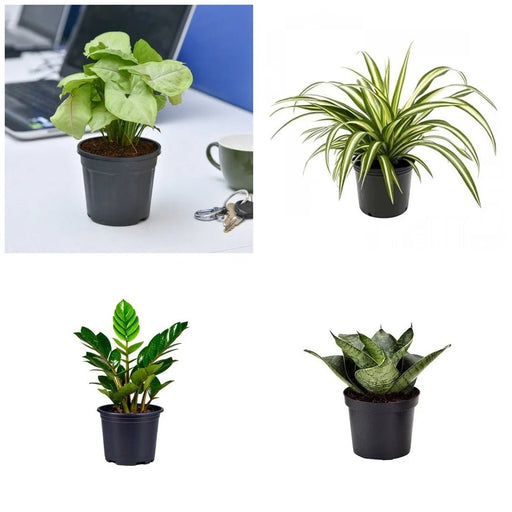
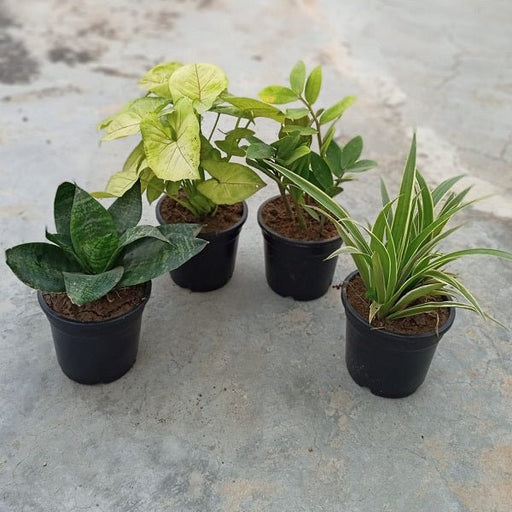 Save 25%
Save 25%
Set of 4 Evergreen Air Purifier Plant Pack Transform your indoor space into a lush, green oasis with our Set of 4 Evergreen Air Purifier Pla...
View full details| SrNo | Item Name |
|---|---|
| 1 | Jasminum sambac, Mogra, Arabian Jasmine Plant in 6 inch (15 cm) Pot |
The Jasminum sambac, commonly known as Mogra or Arabian Jasmine, is a stunning flowering plant renowned for its fragrant white blooms. This evergreen shrub thrives in warm climates and is cherished for its aromatic flowers, which are often used in perfumes and traditional garlands. With its glossy green leaves and delicate blossoms, this plant not only enhances your garden but also fills the air with a sweet, enchanting scent.
What makes the Arabian Jasmine special is its cultural significance in various regions, particularly in Southeast Asia, where it symbolizes love and purity. Its flowers are often used in religious ceremonies and celebrations, making it a beloved plant in many households. Additionally, the plant is known for attracting pollinators, contributing positively to the local ecosystem.
Special features of the Jasminum sambac include its ability to bloom year-round in suitable conditions, producing clusters of small, star-shaped flowers. The plant is also drought-tolerant once established, making it a low-maintenance choice for gardeners. Its versatility allows it to be grown in pots, making it perfect for patios, balconies, or indoor spaces.
If you think caring for a plant is as easy as watering your houseplant and calling it a day, think again! Jasminum sambac, or Mogra, requires a bit more finesse. This diva of the plant world loves bright, indirect sunlight and a well-draining potting mix. Overwatering? A big no-no! Treat it like a delicate flower, and it will reward you with intoxicating fragrance and lush green leaves.
Ah, the Mogra flower! Not just a pretty face, this little gem is packed with benefits. From its enchanting aroma that can lift your spirits to its use in traditional medicine, Mogra is the multitasker of the plant kingdom. It’s like the Swiss Army knife of flowers—great for teas, hair oils, and even skin care. Who knew a flower could be so versatile?
If you haven’t experienced the scent of Arabian Jasmine, you’re missing out on a sensory delight! Imagine walking through a garden at dusk, the air thick with sweet, heady perfume. This fragrance is not just a treat for your nose; it’s a mood enhancer, a stress reliever, and a natural aphrodisiac. Light a candle, sip some tea, and let the aroma whisk you away to a tropical paradise.
Size matters, especially when it comes to pots! A 6-inch pot is the perfect cozy home for your Jasminum sambac. It’s like a snug little apartment for your plant, allowing it to grow without feeling cramped. Just remember, as your Mogra flourishes, it may need a bigger space to stretch its roots. Think of it as a plant moving up in the world!
Patience is a virtue, especially when waiting for your Mogra to grow. This plant isn’t a speedster; it takes its sweet time to reach its full potential. But don’t fret! With the right care, you’ll be rewarded with lush foliage and beautiful blooms. It’s like watching a slow-blooming romance unfold—worth every moment of anticipation!
Want to expand your Mogra family? Propagation is the name of the game! Snip a healthy stem, pop it in water or soil, and watch as new roots emerge. It’s like giving your plant a chance to have its own little adventure. Just remember, patience is key—good things come to those who wait, even in the plant world!
Mogra isn’t just a pretty flower; it’s also a star in traditional medicine. From soothing headaches to alleviating stress, this plant has been used for centuries in various cultures. It’s like having a mini pharmacy right in your garden. Who knew that beauty could also be a healer?
Sip, sip, hooray! Mogra flowers make a delightful addition to your tea. Brewed to perfection, this floral infusion is not only delicious but also packed with antioxidants. It’s like a spa day in a cup—relaxing, rejuvenating, and oh-so-satisfying. So, why not treat yourself to a floral tea party?
Looking to add a touch of elegance to your garden? Arabian Jasmine is your go-to plant! Its lush green leaves and fragrant blooms make it a stunning choice for landscaping. Whether you’re creating a romantic nook or a fragrant pathway, Mogra will elevate your outdoor space to new heights.
Every plant has its enemies, and Mogra is no exception. Aphids, spider mites, and whiteflies can be pesky little intruders. But fear not! With a little vigilance and some natural pest control methods, you can keep your Mogra safe and sound. Think of it as a plant superhero, ready to defend its territory!
Want to impress your guests? Mogra flowers are the secret ingredient to stunning floral arrangements. Their delicate petals and intoxicating scent will elevate any bouquet from ordinary to extraordinary. Whether for a wedding or a dinner party, these blooms will have everyone asking, “Where did you get these?”
Just like us, Mogra has its seasonal quirks. In winter, it may slow down, while summer brings a burst of growth. Adjust your care routine accordingly—less water in the cold months and more sunlight in the summer. It’s all about keeping your plant happy and thriving through the seasons, like a well-timed rom-com!
Ah, the enchanting Jasminum sambac, also known as Mogra or Arabian Jasmine, is a fragrant flowering plant that’s a favorite in gardens and perfumes. With its delicate white blooms, it’s like nature’s own air freshener, bringing a sweet aroma that can make even the grumpiest neighbor smile.
Caring for your Mogra is as easy as pie! Just give it bright, indirect sunlight, keep the soil moist but not soggy, and watch out for pests. A little love and attention, and it’ll reward you with blooms that could charm even the most discerning flower enthusiast.
Absolutely! Jasminum sambac loves to be the star of the show, even indoors. Just ensure it gets enough light, preferably near a sunny window, and it’ll thrive. With the right conditions, you’ll have a fragrant indoor oasis that’ll make your home feel like a tropical paradise.
Water your Arabian Jasmine when the top inch of soil feels dry. Think of it as a thirsty friend; it’ll let you know when it needs a drink! Overwatering is a no-no, so keep it balanced, and your plant will be happier than a cat in a sunbeam.
Your Mogra will thrive in well-draining potting mix, ideally enriched with organic matter. It’s like giving your plant a five-star meal! A mix that retains moisture but allows excess water to escape will keep your plant’s roots happy and healthy.
Like a magnet for mischief, Jasminum sambac can attract pests like aphids and spider mites. But fear not! Regular checks and a gentle spray of insecticidal soap can keep those pesky critters at bay. Your plant will thank you with a bounty of fragrant blooms.
Arabian Jasmine typically blooms in late spring to early summer, but with the right care, it might surprise you with flowers at other times too! It’s like a floral magician, popping up with delightful blooms when you least expect it, filling the air with its intoxicating scent.
Yes, you can! Propagating Jasminum sambac is like sharing the love. Simply take cuttings from a healthy plant, place them in water or soil, and watch them root. Soon, you’ll have more Mogra plants to fill your garden or share with friends—talk about a blooming good time!
Good news for pet parents! Jasminum sambac is generally considered non-toxic to cats and dogs. However, it’s always wise to keep an eye on your furry friends, as they might still find the leaves a tempting snack. Better safe than sorry, right
Mogra can grow anywhere from 2 to 5 feet tall, depending on its environment and care. It’s like the overachiever of the plant world! With proper pruning, you can keep it at a manageable height while still enjoying its fragrant blooms.
Growing Arabian Jasmine is like having a personal aromatherapy session at home! Its sweet scent can reduce stress, improve mood, and even attract pollinators to your garden. Plus, it’s a beautiful addition to any space, making it a win-win for plant lovers everywhere.
Yes, indeed! The flowers of Jasminum sambac are edible and can be used in teas, desserts, and even savory dishes. Just imagine adding a touch of floral elegance to your culinary creations. It’s like a secret ingredient that will impress your guests and elevate your dishes!